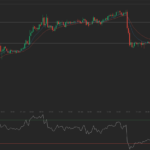 Both West Texas Intermediate and Brent crude benchmarks rose to the highest in a week following better-than-expected trade data from China, as well as supply disruptions in Libya. A weaker dollar also eased pressure on the oil market but speculations that OPEC will most likely retain its current production pace kept gains checked.
Both West Texas Intermediate and Brent crude benchmarks rose to the highest in a week following better-than-expected trade data from China, as well as supply disruptions in Libya. A weaker dollar also eased pressure on the oil market but speculations that OPEC will most likely retain its current production pace kept gains checked.
December US crude rose by 1.07% to $79.49 per barrel by 13:22 GMT, having shifted in a daily range between $79.75, the highest since November 3rd, and $78.35. The contract added 0.95% on Friday to $78.65, closing the week around 2.4% lower.
Meanwhile on the ICE, Brent for delivery in the same month gained 1.61% to $84.73 per barrel. Prices ranged between a one-week high of $84.97 and $83.18. The European benchmark crude gained 0.64% on Friday to $83.39, marking a seventh consecutive weekly decline – the longest losing streak since 2001. Brent was at a premium of $5.24 to its US counterpart, up from Fridays close at $4.74.
Oil prices drew support as better-than-expected trade data from China fanned positive sentiment for the second-biggest oil consumers demand prospects. Data by Chinas National Bureau of Statistics showed on Saturday that Chinese exports surged by 11.6% on an annual basis in October, exceeding analysts projections for a 10.6% increase. This was the seventh straight month of exports growth and the fourth month of above-expected values.
Meanwhile, imports rose at an annualized pace of 4.6% last month, trailing economists forecasts of 5.5%. In September, inbound shipments expanded 7%, offsetting the previous two months combined contraction of 4%. Chinas trade surplus widened for a third month and reached $45.41 billion, beating expectations for $42.00 billion.
Thina Saltvedt, an oil analyst at Nordea Bank AB, said for Bloomberg: “China is importing more raw materials. More activity, more exports, mean more demand for energy and oil.”
However, downbeat inflation data on Monday sounded a bearish tone. Chinas statistics agency reported that consumer prices were flat on a monthly basis in October, compared to projections for a 0.1% growth and ending three months of increases, while year-on-year the CPI index confirmed projections and was unchanged at 1.6%, the lowest in almost five years.
Producer inflation also came in worse than expected, falling by the most since March. The Producer Price Index slid by an annualized 2.2%, underperforming projections for a deflation of -2.0%.
Weaker dollar
A weaker dollar also benefited the oil market. The US dollar gave back some of its recent gains after US nonfarm payrolls came in fewer-than-expected on Friday. The US Labor Department reported that employers added 214 000 jobs in October, trailing the projection of 231 000. September’s reading received an upward revision to 256 000 from initially estimated at 248 000.
The US dollar index, which measures the greenbacks performance against a basket of six major counterparts, eased off a recently hit 4-1/2-year low. The December contract stood at 87.495 at 13:34 GMT, down 0.26% on the day. On Friday the US currency gauge lost 0.46% and closed at 87.726, having earlier risen to 88.315, the highest since June 2010.
A weaker greenback makes dollar-denominated commodities cheaper for foreign currency holders and boosts their appeal as an alternative investment.
The dollars retreat, however, was limited as the US unemployment rate slid to a new six-year low of 5.8% which drew it closer to Feds full-employment target, an objective policy makers have set before raising interest rates.
Supply disruptions
Supply disruptions in Libya, holder of Africas biggest crude oil reserves, also helped prices to gain ground. Exports at eastern Libyas Hariga oil port were halted on Saturday due to a strike by security guards over unpaid salaries.
Meanwhile, the Sharara and Elephant fields in southwestern Libya are expected to restart today, said on Sunday Mohamed Elharari, spokesman for state-run National Oil Corp. The Elephant field was shut down yesterday due to a power outage, while output at the former was halted due to political violence.
Bloomberg also reported that the Es Sider and Mellitah ports were closed last week due to bad weather.
The 12 OPEC members will convene on November 27 in Vienna to discuss the groups production pace, but major producers have already signaled their reluctance to cut output and lose market share.
Pivot points
According to Binary Tribune’s daily analysis, West Texas Intermediate December futures’ central pivot point is at $78.51. In case the contract breaches the first resistance level at $79.54, it may rise to $80.44. Should the second key resistance be broken, the US benchmark may attempt to advance $81.47.
If the contract manages to breach the first key support $77.61, it might come to test $76.58. With this second key support broken, movement to the downside could continue to $75.68.
Meanwhile, December Brent’s central pivot point is projected at $83.14. The contract will see its first resistance level at $84.11. If breached, it may rise and test $84.84. In case the second key resistance is broken, the European crude benchmark may attempt to advance $85.81.
If Brent manages to penetrate the first key support at $82.41, it could continue down to test $81.44. With the second support broken, downside movement may extend to $80.71 per barrel.





